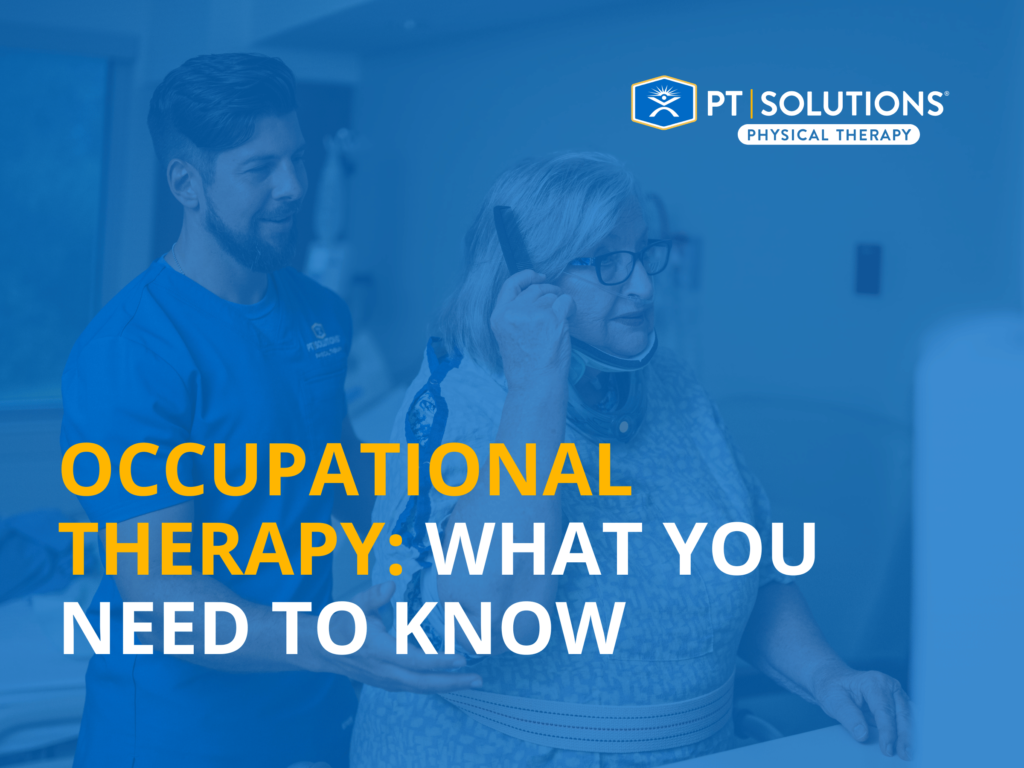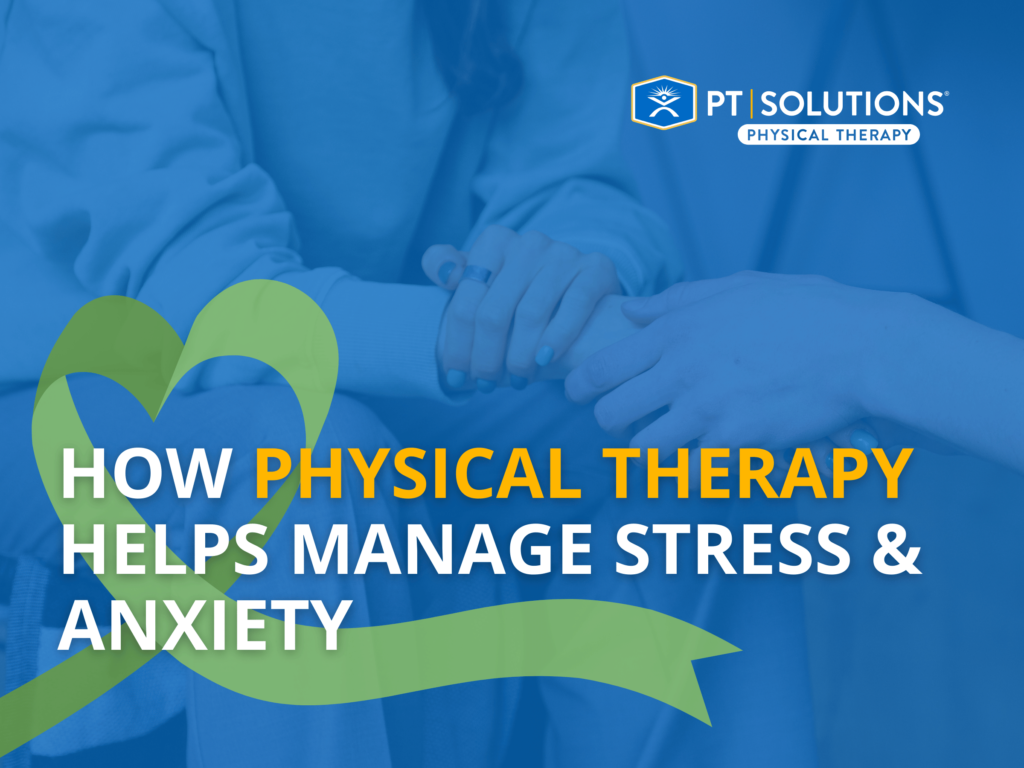PT Solutions
Occupational Therapy: What You Need to Know
April 30, 2025

What is Occupational Therapy?
Occupational therapy (OT) is a type of care that helps people of all ages build or regain the skills they need to participate in everyday life. Whether you’re recovering from an injury, managing a chronic condition, or adapting to new physical or cognitive challenges, occupational therapy focuses on helping you do the things that matter most—like getting dressed, preparing meals, working, or going to school.
Occupational therapists take a personalized approach to treatment. They work closely with each patient to understand their goals, needs, and the tasks that are most important to them. From there, they build a plan that supports greater independence and confidence in daily life.
What Are Activities of Daily Living (ADLs and IADLs)?
A key part of occupational therapy is improving a person’s ability to complete activities of daily living (ADLs)—the essential tasks we do every day to take care of ourselves. These include:
- Bathing and grooming
- Dressing
- Eating and feeding
- Toileting
- Mobility or moving around safely
Beyond these basic tasks, OTs also address instrumental activities of daily living (IADLs). These are more complex but still essential for independent living. IADLs may include:
- Managing finances
- Preparing meals and cleaning up
- Caring for pets or children
- Using communication devices
- Driving or navigating public transportation
- Shopping
- Managing health routines
- Ensuring safety at home
When any of these tasks become difficult, occupational therapy can help restore or adapt the ability to complete them. This can mean working on strength, coordination, memory, or even learning how to use adaptive equipment or home modifications.
Why Occupational Therapy Matters
Occupational therapy goes beyond physical recovery—it supports mental well-being, builds confidence, and improves quality of life. Patients aren’t just treated for their condition; they’re empowered to live more fully and independently.
By focusing on what matters most to each person, OTs help patients set meaningful goals and achieve lasting outcomes—whether that’s returning to work, staying in school, or simply feeling more capable at home.
What to Expect at Your First Visit?
Upon first meeting a patient, the occupational therapist will ask, “What is most important to you?” The therapist will then help their patient get back to doing the things they want and need to do through one of four interventions as described by the OT Practice Framework:
Therapeutic Use of Self: The occupational therapist’s planned use of their own personality, insights, perceptions, and judgments as part of the therapeutic process.
Therapeutic Use of Occupations and Activities: Occupations and activities selected for specific patients that meet therapeutic goals. To use occupations and activities therapeutically, context, activity demands, and client factors all should be considered in relation to the patient’s therapeutic goals.
- Occupation-Based Activity: Allows patients to engage in behaviors or activities that match their own goals and lifestyles. Examples include playing on playground during recess, buying groceries to cook their own meal, adapt assembly lines to achieve greater safety, or putting on clothes without assistance.
- Purposeful Activity: Allows patients to engage in goal-directed behaviors or activities within a therapeutically designed context that lead to an occupation. Examples include practicing slicing vegetables, drawing a straight line, getting in and out of a bathtub with grab bars, or role playing to learn ways to manage emotions.
- Preparatory Methods: Prepares clients for occupational performance. Preparatory methods are used in preparation for purposeful and occupation-based activities. Examples include sensory input to promote optimal response, modalities (ultrasound, electrical stimulation, etc), splinting, and exercise.
Consultation Process: A type of intervention in which occupational therapists use their knowledge and expertise to collaborate with the client. This involves identifying the problem, creating possible solutions, and altering them as necessary for greater effectiveness.
Education Process: An intervention process that involves the imparting of knowledge and information about occupation and activity.
Who Does an Occupational Therapist Work With?
An occupational therapist may help a very wide variety of patients. These may include:
- Disabled children
- People who suffered accident injuries
- Elderly people who are losing physical abilities
- Employers looking to create a safer work environment
How Does an Occupational Therapy Program Work?
Every occupational therapy program begins with a thorough evaluation. During this initial session, the occupational therapist will speak with the patient to understand their daily challenges and personal goals. Because occupational therapy is patient-centered, the treatment plan is always built around what matters most to the individual.
Based on the evaluation, the therapist will develop a personalized plan to help the patient manage their daily activities more efficiently. This might include learning new ways to complete basic tasks or modifying current routines to better suit their abilities.
To make the plan as effective as possible, the occupational therapist may observe the patient in their natural environment—such as at home, work, or school. This helps the therapist identify real-world obstacles and recommend solutions like adaptive equipment or modifications. If tools or devices are introduced, the occupational therapist will provide hands-on guidance to ensure the patient can use them safely and confidently.
What Are the Long-Term Benefits of Occupational Therapy?
Ultimately, occupational therapy is beneficial for anyone who needs support adapting to injury, illness, or disability. It helps patients improve their independence by giving them the tools to adjust their environment, build new skills, and confidently take on their daily activities.
Patients who work with an occupational therapist often feel more independent, in control of their lives, and better equipped to manage everyday challenges.
An injury or disability doesn’t have to keep you from living fully. Our team of experienced occupational therapists is here to help you regain your independence and return to the activities that matter most—find a location near you!



